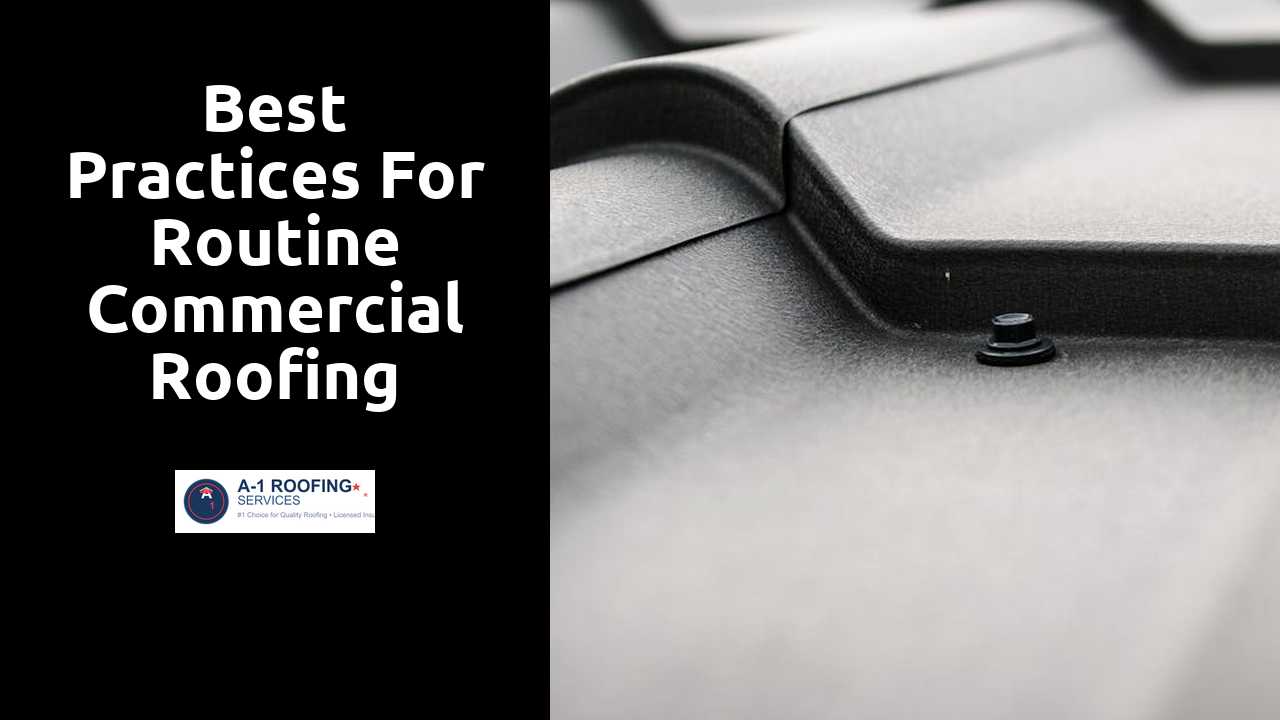
Best Practices for Routine Commercial Roofing Inspections
Table Of Contents
Documentation of Inspection Findings
Thorough documentation of inspection findings is crucial for maintaining the integrity of a commercial roofing system. Every detail, from minor wear to significant damage, should be recorded meticulously. This practice not only assists in identifying patterns over time but also serves as a historical record for future reference. Including photographs and sketches can enhance the clarity of reports, allowing for better understanding among stakeholders.
Keeping detailed documentation helps in making informed decisions regarding repairs and maintenance. It also provides a reference point for contractors, ensuring that previous issues are addressed in future inspections. Additionally, well-documented findings can be invaluable during warranty claims or insurance discussions. Accurate records foster transparent communication between property owners, managers, and roofing professionals.
See here for more great tips.
Importance of Detailed Reporting
Thorough documentation during roofing inspections serves as a vital reference for both current conditions and future maintenance needs. Precise records can highlight issues that might otherwise go unnoticed and provide a baseline for comparing changes over time. Photos, notes, and detailed descriptions of findings create a comprehensive history of the roof's performance and condition. Such records enhance communication with contractors and stakeholders, ensuring everyone understands the necessary actions or repairs.
Creating detailed reports also aids in future planning and budgeting. Property owners can make informed decisions regarding maintenance schedules and resource allocation when they have access to structured data. Accurate documentation not only facilitates immediate repairs but also helps in long-term strategic planning, increasing the overall lifespan of the roofing system. Engaging in this practice can save resources and reduce the likelihood of significant, unexpected expenditures later on.
Professional vs. DIY Inspections
When it comes to roofing inspections, the decision between professional assessments and DIY efforts significantly impacts overall results. Many property owners opt for DIY inspections to save costs. This approach can be tempting, especially for those with a basic understanding of roofing systems. However, tools and skills that professionals possess often surpass those available to the average person. Mistakes in DIY inspections can lead to misdiagnosed issues, resulting in more extensive damage down the line.
Engaging a professional roofing inspector offers a level of expertise that is difficult to replicate. Experienced inspectors can identify subtle signs of wear and damage that may elude a less trained eye. They also have access to specialized equipment that enhances the accuracy of their assessments. Moreover, industry professionals stay updated on the latest roofing technologies and standards. This ensures that inspections are not only thorough but also compliant with current regulations and best practices. For many property owners, the benefits of a professional inspection outweigh the initial cost.
When to Call in Experts
Recognizing when to engage professional roofing experts is crucial for maintaining the integrity of a commercial roof. Routine inspections might reveal minor issues that can be managed internally. However, significant problems, such as extensive water damage or structural issues, necessitate expert analysis. These professionals possess the knowledge and experience to identify underlying concerns that may not be visible to the untrained eye.
Additionally, certain situations call for immediate expert intervention. Severe weather events, such as hailstorms or heavy winds, can lead to unforeseen damage that requires a skilled assessment. If there are visible leaks, missing shingles, or significant wear and tear, consulting a roofing expert can prevent further damage and save costs in the long run. Their access to specific tools and materials ensures that any repairs made are of high quality and durable.
Common Misconceptions About Roofing Inspections
Many property owners believe that routine inspections are unnecessary if the roof appears to be in good condition. This misconception often leads to a lack of maintenance and potential issues going unnoticed until they escalate into more significant problems. Regular inspections are crucial because even the smallest signs of wear can indicate underlying issues that are not visually evident.
Another common myth is that DIY inspections are always sufficient for maintaining a roof's health. While some basic checks can be performed by property owners, professional inspections offer a level of expertise that is hard to match. Experienced inspectors have the training to identify subtle signs of damage or deterioration that an untrained eye may miss, ensuring that any potential issues are addressed promptly and preventing costly repairs down the line.
Debunking Myths
Many people believe that routine roofing inspections are unnecessary if there are no visible leaks or damage. This misconception can lead to significant issues down the line. Just because the roof appears intact does not always mean it is without problems. Various factors, such as weather conditions and unseen wear, can compromise roofing integrity. Proactive inspections can catch these issues early, preventing more extensive damage and costly repairs.
Another common myth is that inspections only need to occur when problems arise. Regular maintenance should be a standard practice rather than a reactionary measure. Ignoring routine checks can lead to rapid deterioration, ultimately shortening the lifespan of the roof. Establishing a consistent inspection schedule helps ensure the roofing system remains in optimal condition and mitigates the risk of surprise costs later.
Related Links
Importance of Regular Maintenance for Commercial RoofsProfessional Maintenance Services for Business Roofs